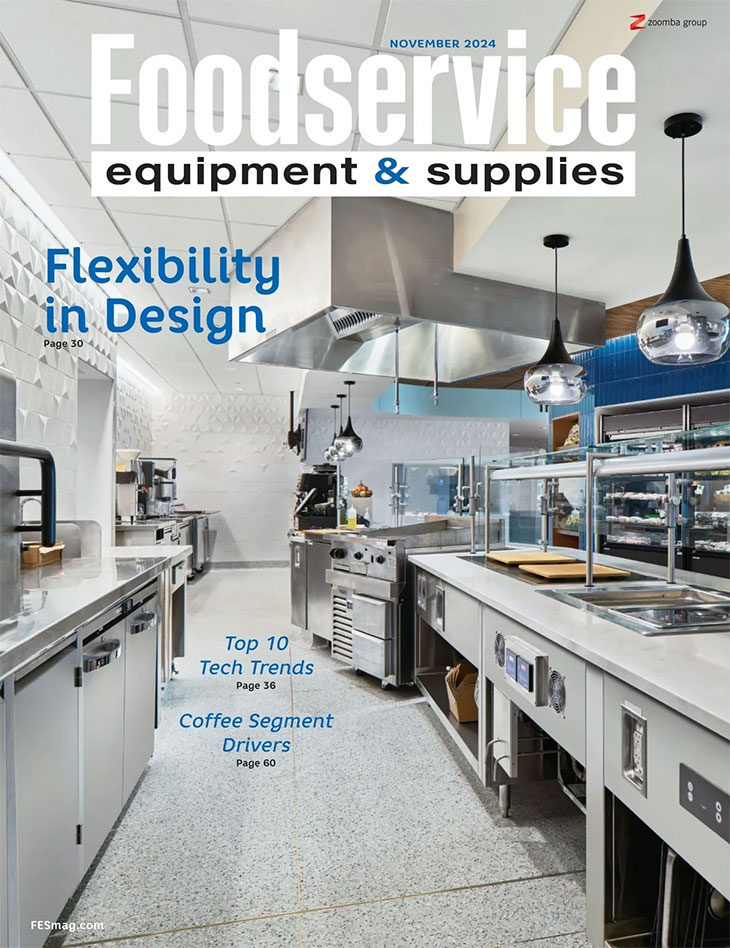Slush/smoothie machines have become more popular as an increasing number of operators recognize the profit potential of these beverages. Machines for creating smoothies and blended coffee beverages are now common in quick-service restaurants, while slushies remain a fixture in convenience stores.
Slush/smoothie machines, also called granita machines, are basically countertop systems that produce water- and sugar-based beverages. Foodservice staff pour the flavored mix in the machine. The liquid freezes in the unit’s clear bowl, and production takes an average of 40 minutes to an hour. Foodservice operators can also use this type of system to make blended frozen coffee drinks, lemonade and cocktails. The number of bowls corresponds with the number of dispensing nozzles. Looking at hourly production, single-bowl models can produce one to three gallons, a two-bowl system makes between four and six gallons, and a three-bowl unit produces up to eight gallons.
Frozen carbonated and uncarbonated beverage machines are more heavy-duty and create icy or smoothie products. These units may have refrigerated or unrefrigerated hoppers in addition to a cylinder that freezes the concoction. They take between 10 and 30 minutes to produce between 7 and 26 gallons per hour.
In larger machines, staff add the beverage manually with a pour-over machine or automatically with liquid or powder autofill types. With liquid autofill, the unit typically draws the mix from a bag-in-box setup, while the powdered type combines a powdered drink mix and water within the machine. With both manual and auto types, the machine disperses the product from the hopper into a barrel or freezing cylinder, where a rotating auger mixes it in a tank as it’s frozen into a slush.
Each type of unit offers advantages and disadvantages. Pour-over machines may be more affordable, but these units require additional labor in mixing the beverage. Although the autofill systems mix beverages automatically, they require an external water pump to accomplish this.
Machines with smaller freezing cylinders can produce batches every six minutes, while larger cylinders may have more limited output due to increased recovery times. Keep in mind that the higher the machine’s voltage, the faster the recovery time.
Standard features on a granita machine include a night mode to keep product refrigerated rather than frozen and different alerts that let operators know when adding more mix or cleaning is necessary. The larger models may provide more details on the cleaning cycle, such as when it was last performed and how long until cleaning is needed. These systems may include cup and/or syrup dispensers as well as features that provide quieter operation and illuminated point-of-sale signs for front-of-house use.
Operators need to consider the serving size and amount of servings per hour when calculating output.
Another aspect of these units is the filtration system. Operators need to clean filtration systems to avoid putting undue stress on the machine’s compressors, which can cause failure. Some models offer pressure switches that automatically shut down the machine when airflow gets restricted or until the operator cleans the filter.
Autofill pumps can be either built into machines or separately installed. Some units offer icebreaking features that help eliminate ice buildup and reduce dripping. Push/pull handles and machines designed for one-handed use offer added convenience for busier operations.
Operators need to keep in mind that temperature consistency is critical when using natural sugar or dairy products as both can easily spoil and present food safety issues.











